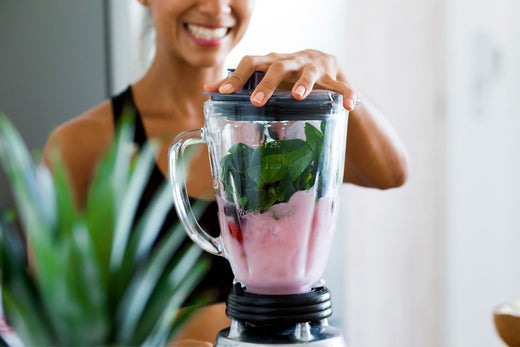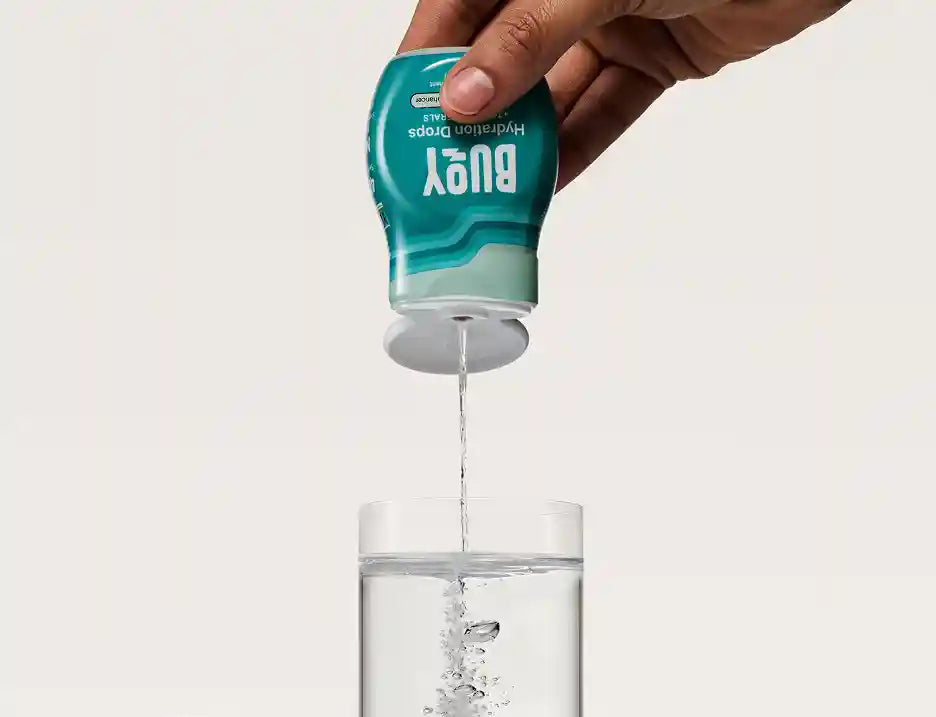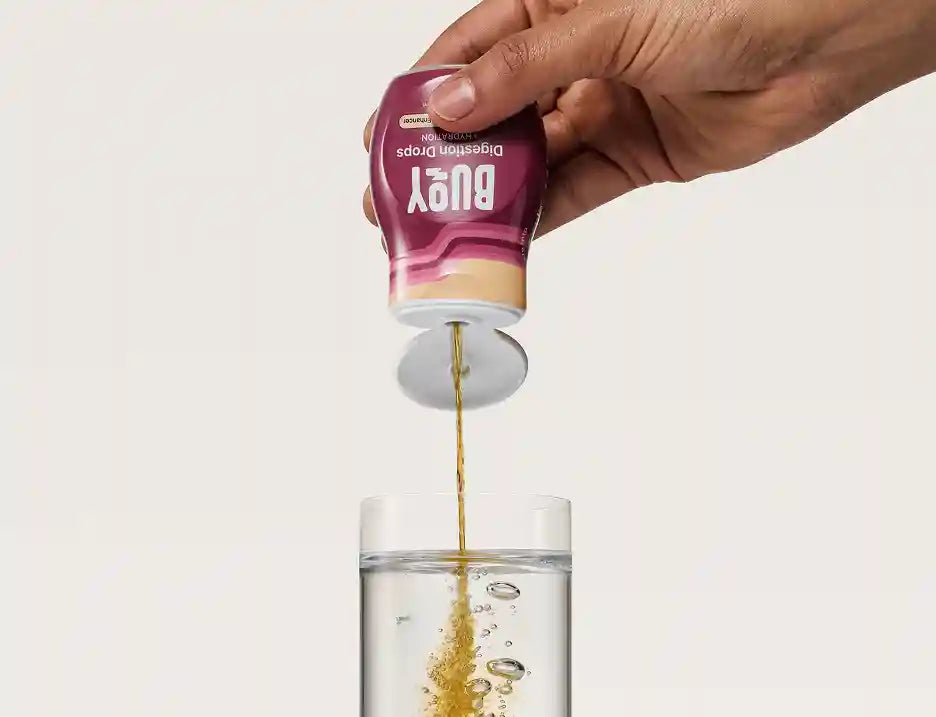
POTS Diet and Nutrition Guide: Managing Symptoms Through Proper Nutrition
Dealing with POTS can feel like you're constantly battling an invisible enemy, with symptoms like dizziness, fatigue, and brain fog making everyday tasks a challenge. But did you know that the food you eat can make a big difference in how you feel?
What is POTS? If you're not familiar with POTS (Postural Orthostatic Tachycardia Syndrome), it's a condition that affects the autonomic nervous system, which controls functions like heart rate, blood pressure, and digestion. When someone with POTS stands up, their heart rate increases rapidly, and their blood pressure may drop, leading to a range of symptoms (1).
Essential Takeaways:
- Nutrient-Rich Foods Can Help Alleviate POTS Symptoms: Incorporating high-sodium foods, hydrating beverages, and electrolyte-rich foods like bananas and leafy greens can help you manage POTS symptoms by supporting your blood volume, hydration, and nutrient balance.
- Smart Meal Planning and Hydration Strategies are Key: Eating small, frequent meals and staying hydrated with water and electrolytes throughout the day can help stabilize blood pressure and energy levels, making it easier to manage your POTS symptoms.
The right diet and nutrition can significantly help you manage POTS symptoms, giving you more control over your day-to-day life. Let's explore how making smart dietary choices can improve your health and well-being, offering relief and support when you need it most.
- Importance of Diet in POTS Management
- Recommended Nutrients for POTS Patients
- Beneficial Foods for POTS
- Foods to Avoid or Limit
- Meal Planning Tips for POTS
- Tips for Staying Hydrated
- Putting It All Together
Importance of Diet in POTS Management
First things first – let's talk about why diet is such a big deal when it comes to managing POTS. Your diet affects your POTS symptoms in a few key ways:
- Blood Volume and Pressure: Some foods, like those high in sodium, can help increase your blood volume and blood pressure, which can be helpful for managing POTS symptoms.
- Hydration: Staying properly hydrated is crucial for POTS management, and the foods and beverages you choose can impact your hydration levels.
- Nutrient Balance: Getting the right balance of nutrients, like electrolytes and fiber, can help support your overall health and alleviate certain POTS symptoms (1,2).
Some of the most common symptoms of POTS include lightheadedness, dizziness, fatigue, heart palpitations, brain fog, and headaches. While diet alone can't eliminate these symptoms, it can play a significant role in managing them and improving your overall quality of life.
It's important to remember that dietary changes aren't a substitute for medical treatment – they're a complementary strategy. Working with your healthcare provider to find the right combination of medications, lifestyle changes, and dietary modifications can help you feel your best.
Recommended Nutrients for POTS Patients
Now, let's talk about some specific nutrients that can be particularly helpful for POTS patients.
Sodium
Sodium is a big one. It helps increase blood volume and blood pressure, which can be beneficial for managing POTS symptoms. The trick is to find the right balance – too little sodium can worsen symptoms, but too much can have negative health effects.
Work with your healthcare provider to determine the right sodium intake for you, but in general, POTS patients often benefit from a slightly higher sodium intake than the general population.
Fluids
Staying hydrated is key for managing POTS symptoms. Aim for at least 2-3 liters (about 67-101 ounces) of fluids per day, and more if you're sweating a lot or spending time in hot weather. Water is always a great choice, but you can also mix things up with herbal teas, broths, and electrolyte drinks.
Electrolytes
Speaking of electrolytes – these nutrients, which include potassium, magnesium, and calcium, play a big role in regulating fluid balance and supporting proper muscle and nerve function.
Incorporating high-quality electrolyte supplements and electrolyte-rich foods, like bananas, leafy greens, and nuts, into your daily routine can help keep your levels in check.
Fiber
Fiber is important for digestive health, and many POTS patients experience digestive issues like constipation. Aiming for 25-30 grams of fiber per day from sources like fruits, vegetables, whole grains, and legumes can help keep things moving smoothly (3,4).
Beneficial Foods for POTS
So, what specific foods should you be incorporating into your diet? Here are some top picks:
- High-Sodium Foods: Like salted nuts and seeds, pickles, olives, broths, soups, pretzels, and saltines. Or make any food more POTS-friendly with a pinch of natural sea salt.
- Hydrating Foods and Beverages: Such as water, coconut water, herbal teas, watermelon, cucumbers, and celery.
- Potassium-Rich Foods: Including bananas, oranges and orange juice, potatoes, spinach, and other leafy greens.
- Magnesium-Rich Foods: Like almonds, cashews, pumpkin seeds, whole grains (quinoa, oats, and brown rice), and dark chocolate.
- Calcium-Rich Foods: Such as dairy products (milk, yogurt, cheese), fortified plant milks (almond, soy, oat), canned fish with bones (salmon, sardines), collard greens, and kale (3,4).
Incorporating these nutrient-dense foods into your diet can help you manage your POTS symptoms and feel your best. Remember, variety is key – aim to include a mix of these foods throughout your day to ensure you're getting a wide range of vitamins, minerals, and other beneficial nutrients.
And don't be afraid to get creative in the kitchen! Experiment with new recipes and flavor combinations to keep things interesting and enjoyable.
Foods to Avoid or Limit
Just as some foods can be beneficial for managing POTS symptoms, others can actually make symptoms worse. Here are some foods to avoid or limit.
Processed Foods
Processed foods are often high in unhealthy fats and added sugars, and low in essential nutrients. They can also be high in sodium, but not the good kind – the sodium in processed foods is often paired with other less-than-ideal ingredients.
Caffeinated Beverages
Caffeine can be dehydrating and can also worsen symptoms like tachycardia and tremors for some POTS patients. If you love your morning coffee or tea, consider switching to decaf or herbal alternatives.
Alcohol
Alcohol can cause dehydration and lower blood pressure, both of which can exacerbate POTS symptoms. If you do choose to drink, do so in moderation and be sure to hydrate well with water and electrolytes.
High-Sugar Foods
Sugary foods can cause rapid spikes and crashes in blood sugar levels, which can worsen fatigue and other POTS symptoms. Instead of reaching for candy or pastries, opt for naturally sweet foods like fruit or small amounts of dark chocolate (3,4).

Incorporating nutritious foods like fresh vegetables, dairy, and whole grains can provide the necessary nutrients to help alleviate your POTS symptoms.
Meal Planning Tips for POTS
Knowing what to eat is one thing – actually putting it into practice is another. Here are some practical tips for meal planning with POTS in mind.
Small, Frequent Meals
Eating smaller meals more frequently throughout the day can help prevent big drops in blood pressure and keep your energy levels more stable. Aim for 5-6 small meals rather than 3 large ones.
Balanced Meals
When planning your meals, aim for a balance of complex carbohydrates, lean proteins, and healthy fats. This combination helps keep blood sugar levels stable and provides sustained energy (3).
Prepping and Planning
Taking some time each week to plan out your meals and do some prep work can make it much easier to stick to a POTS-friendly diet. Chop veggies, cook grains, and portion out snacks in advance so you always have healthy options on hand.
Healthy Snacks
Having nutritious snacks on hand can help you maintain your energy levels and prevent blood sugar dips. Some good options include:
- Fresh fruit with nut butter
- Raw veggies with hummus
- Trail mix with salted nuts and dried fruit
- Greek yogurt with berries
By incorporating these meal planning strategies, you'll be well on your way to creating a sustainable, POTS-friendly eating routine. Remember, the key is to find what works best for you and your lifestyle.
Don't be afraid to experiment and make adjustments as needed – the most important thing is to prioritize your health and well-being. With a little planning and preparation, you can ensure that you always have nourishing, symptom-friendly options on hand.
Tips for Staying Hydrated
Finally, let's talk about hydration. Staying properly hydrated is crucial for managing POTS symptoms, but it can be easier said than done. Here are some tips to help you meet your fluid needs:
- Carry a water bottle with you throughout the day and sip regularly.
- Use a water bottle with time markers to help you track your intake.
- Set reminders on your phone to drink water every hour.
- Include hydrating foods like watermelon, cucumbers, and soups in your diet.
- Consider adding a squeeze of electrolytes to your beverages for an extra boost.
Remember, everyone's fluid needs are different, so work with your healthcare provider to determine the right amount for you.
Putting It All Together
Navigating POTS can feel overwhelming at times, but remember – you have the power to take control of your symptoms through the choices you make every day, including what you put on your plate.
Focus on Nutrient-Dense Foods
By focusing on nutrient-dense, hydrating foods and staying mindful of your body's needs, you can give yourself the best possible chance of feeling your best. Of course, diet is just one piece of the puzzle.
Work with Your Healthcare Team
It's also important to work with your healthcare team to develop a comprehensive POTS management plan that includes medications, lifestyle changes, and other therapies as needed. Learn more about Effective Treatments for POTS with our guide.
Remember, treatment for POTS often involves a multi-faceted approach, including medications, lifestyle changes, and dietary modifications. By working closely with your healthcare team and incorporating the dietary strategies outlined in this guide, you'll be well on your way to effectively managing your POTS symptoms and living your best life.
Take Control of Your Symptoms
By nourishing your body with the foods it needs to thrive, you're giving yourself a strong foundation for symptom management and overall wellness. So, take it one day at a time, be patient with yourself, and remember – you've got this!
With the right tools and support, you can navigate POTS with confidence and live your best life.

Discover the benefits of Buoy Rescue Drops – 3x higher bioavailability, POTS strength electrolytes, and no inflammatory ingredients.
References:
- Zhao, S. & Tran, V.H. (Updated August 7, 2023). Postural Orthostatic Tachycardia Syndrome. Retrieved from https://www.ncbi.nlm.nih.gov/books/NBK541074/
- Cleveland Clinic. (2022). Postural Orthostatic Tachycardia Syndrome (POTS). Retrieved from https://my.clevelandclinic.org/health/diseases/16560-postural-orthostatic-tachycardia-syndrome-pots
- Standing Up to POTS. (n.d.). Nutritional Strategies to Help Manage POTS. Retrieved from https://www.standinguptopots.org/nutritionstrategiesPOTS
- Healthline. (2024). 5 Diet Tips for People with POTS. Retrieved from https://www.healthline.com/health/pots-diet




